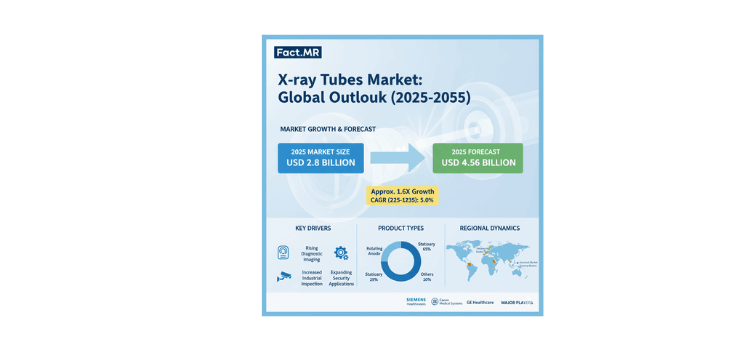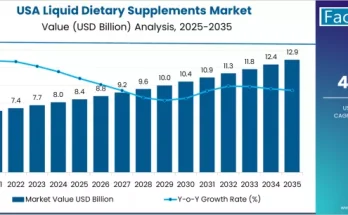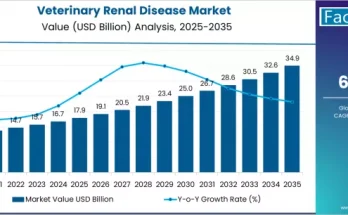Fact.MR’s latest analysis reveals how healthcare digitalization and industrial quality control are shaping the next decade of X-ray innovation.
The global X-ray tubes market, valued at USD 2.8 billion in 2025, is projected to expand at a 5% CAGR, reaching USD 4.56 billion by 2035, according to the latest market intelligence report by Fact.MR. This growth is fueled by rapid advancements in AI-driven imaging, miniaturization technologies, and rising demand across medical, industrial, and defense applications.
Steady Growth Underpinned by Medical and Industrial Demand
X-ray tubes, critical components for diagnostic and non-destructive imaging systems, are experiencing consistent global demand. Healthcare applications account for nearly 45% of total usage, propelled by rising incidences of chronic diseases, such as cancer, cardiovascular ailments, and orthopedic conditions, which are intensifying the need for early and precise imaging.
Meanwhile, industrial sectors—including aerospace, automotive, and electronics—are adopting high-performance X-ray tubes for real-time defect analysis, material inspection, and quality assurance. As global production shifts toward higher precision and safety compliance, the market’s industrial share (currently 25%) is set to grow steadily through 2035.
“Digital transformation in both healthcare and manufacturing is creating parallel growth avenues for X-ray technologies,” said a senior analyst at Fact.MR. “From hospital imaging rooms to factory floors, the demand for accuracy, efficiency, and low radiation exposure is driving innovation across every use case.”
Technology Innovation Redefines Market Competitiveness
The next decade of X-ray technology is expected to be dominated by AI-enabled imaging systems, portable diagnostic devices, and sustainable tube designs. Rotating anode tubes, which currently hold a 70% market share, continue to outperform stationary counterparts in high-resolution and high-throughput imaging. Manufacturers like GE Healthcare, Siemens Healthineers, and Varex Imaging are prioritizing lightweight, energy-efficient, and high-output tubes to enhance image clarity while minimizing patient exposure.
R&D is increasingly centered around:
-
AI-based image reconstruction and predictive diagnostics
-
Eco-friendly tube manufacturing materials
-
Smart cooling and long-life anode designs
-
Mobile and emergency imaging systems
Fact.MR’s stakeholder survey highlights that 77% of industry participants demand higher durability and 73% prioritize radiation reduction. The convergence of digital radiography, 3D/4D imaging, and sustainable design standards is setting new benchmarks for performance and compliance.
Regional Growth Outlook: China and the U.S. Lead
North America and Europe remain at the forefront due to strong healthcare infrastructure and high adoption of AI-based diagnostic tools. The U.S. market, projected to grow at 6.9% CAGR, benefits from steady replacement cycles of legacy systems, strong reimbursement frameworks, and R&D-driven innovation.
In Europe, Germany (6.0%), the UK (5.8%), and France (5.5%) are emerging as hubs for RoHS-compliant and energy-efficient imaging equipment, aligned with the EU’s sustainability mandates.
The Asia-Pacific region, however, represents the fastest-growing opportunity. China, projected to expand at 7.4% CAGR, is capitalizing on healthcare modernization programs like Healthy China 2030. Rapid hospital construction, government incentives for local manufacturing, and AI-integrated imaging systems are accelerating adoption. Similarly, South Korea (6.2%) and Japan (5.6%) are boosting demand through early disease screening programs and digital health initiatives.
Competitive Landscape: Innovation-Driven Growth
The X-ray tubes market remains highly consolidated, with top players emphasizing R&D collaboration, OEM integration, and supply chain resilience.
| Company | Market Share (Approx.) | Strategic Focus |
|---|---|---|
| Varex Imaging Corporation | 20–23% | Modular tube systems and OEM partnerships |
| Comet Group | 15–18% | Long-life, high-power industrial X-ray solutions |
| Canon Electron Tubes & Devices Co. Ltd | 13–15% | Compact high-output tubes for CT and DR |
| Siemens AG | 10–12% | Integrated tube innovation for digital imaging |
| General Electric Company | 8–10% | Low-dose diagnostic imaging solutions |
Emerging innovators like Malvern Panalytical, Proto Manufacturing, and Toshiba Electron Tubes are focusing on microfocus and material analysis systems, catering to the precision needs of industrial applications.
To maintain a competitive edge, manufacturers are:
-
Enhancing supply chain resilience amid global component shortages
-
Forming cross-sector alliances for semiconductor-based innovation
-
Investing in recyclable materials to comply with evolving e-waste norms
-
Offering OEM customization for diagnostic and industrial integration
Future Outlook: The Decade of Smart Imaging
Between 2025 and 2035, the X-ray tubes industry will witness a shift toward smart imaging ecosystems that combine cloud-based diagnostics, predictive maintenance, and AI-powered analytics. Decentralized imaging centers and portable solutions will redefine access to radiographic services in both urban and remote areas.
Moreover, sustainability is becoming a defining priority. Manufacturers are transitioning to lead-free materials, energy-efficient emission designs, and recyclable tube architectures. This trend aligns with global sustainability frameworks while cutting long-term operational costs for hospitals and inspection facilities.
“AI integration and green manufacturing will reshape the competitive hierarchy in this sector,” the report adds. “Companies that align innovation with compliance and affordability will capture maximum value in the coming decade.”
As digital diagnostics and industrial automation converge, the X-ray tubes market stands at the intersection of healthcare innovation and precision engineering. With steady growth prospects, multi-industry adoption, and strong policy support worldwide, the sector offers substantial opportunities for manufacturers, component suppliers, and technology investors seeking long-term value creation.
The full report, “X-ray Tubes Market Analysis (2025–2035),” covers 30+ countries, segment-wise insights, competitive benchmarking, and key investment opportunities.
Browse Full Report : https://www.factmr.com/report/x-ray-tubes-market



